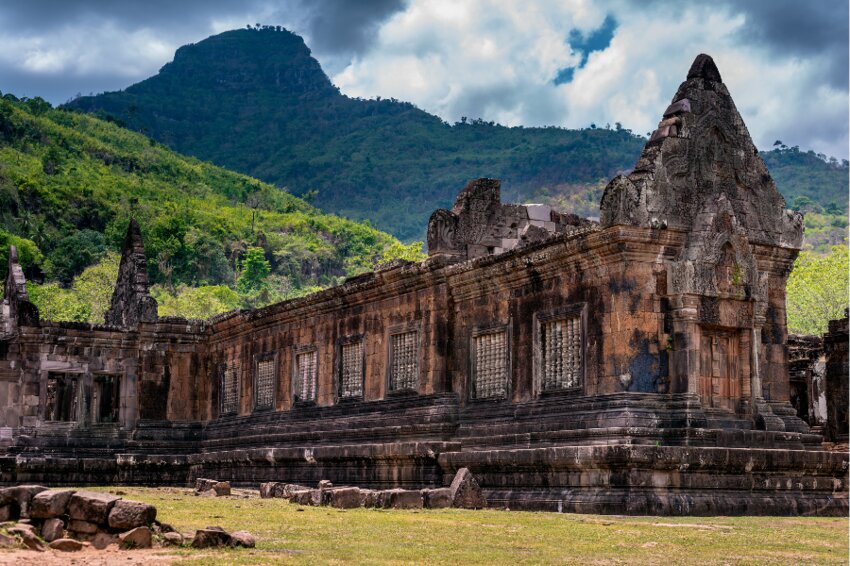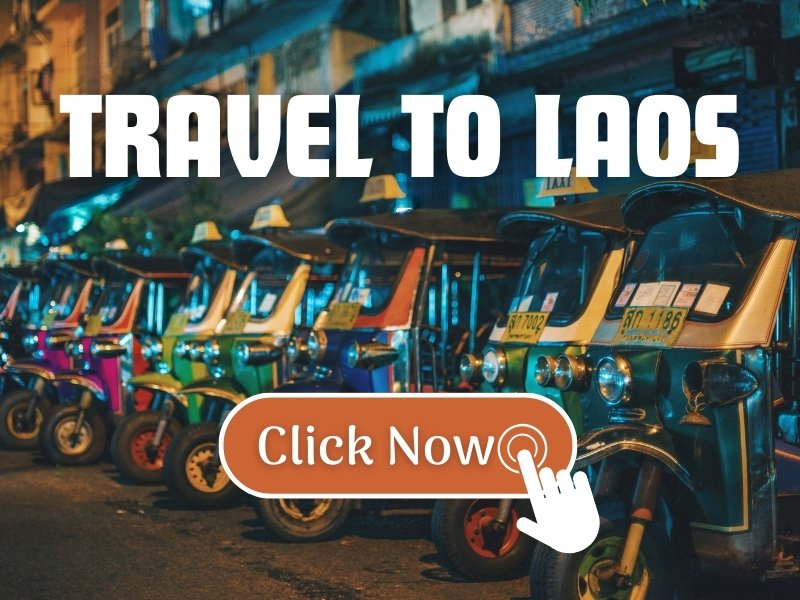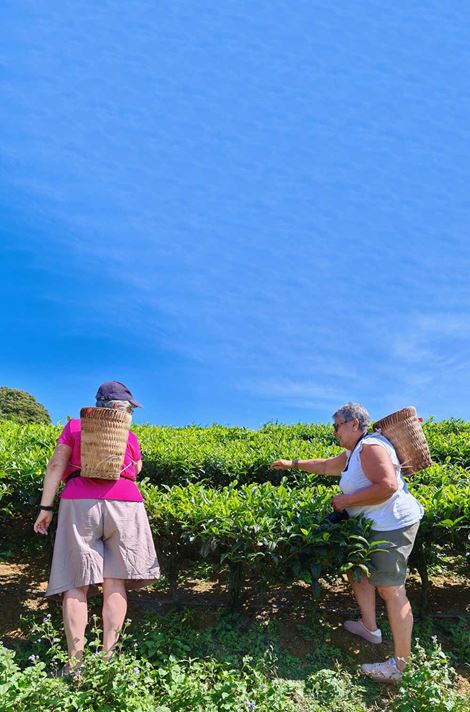Champasak: The Untold Secrets of Wat Phou Temple
This region lies in southwestern Laos, with Champasak being a primary pivot both politically and economically for Laos. This area is dotted with ancient temples, which bear the imprint of the Angkor people of Cambodia. Champasak has many minorities, all of whom have distinctive languages, cultures, and ways of living.
Fabled for its peaceful manner of life, warm welcome, and rich cultural, historical, and natural heritage, the province has witnessed the rise and fall of successive kingdoms. Today, it is an arena filled with archaeological artifacts strewn across the expanse. Come and see this bit of the Land of the Million Elephants with us.
- Why visit Champasak?
- When to Visit Champasak?
- How to get there?
- What to Do and See in Champasak and Wat Phou?
- Pre-Angkorian Archaeological Site of Wat Phou
- Bolaven Plateau
- 4000 Islands and Irrawaddy Dolphin Region
- Pakse
- Visit Champasak: Which Itinerary and How Many Days?
- Tips for a Complete Trip
- Our last words
Why visit Champasak?
Pakse city is in Champasak province, located about 645 kilometers south of Vientiane and around 40 kilometers southwest of Wat Phou. The province sits strategically on the banks of the Mekong River and borders both Thailand and Cambodia. This makes the land very rich in various resources, including forests, waterfalls, and plateaus. Take a browse at the reasons why Champasak really must be considered for a worthy visit:
- Champasak's international airport, affording it easy access from several cities in and around neighboring countries, makes it easy for citizens to travel to the province.
- The hundreds of ancient cultural sites, monuments, and sacred temples found scattered throughout the province tell of past cultural influences, particularly Khmer, in the region with rich history and unparalleled culture.
- Open natural landscapes, such as the Bolaven Plateau and Four Thousand Islands, attract naturalists with different outdoor activities for adventurous souls, including hiking, zip-lining, and kayaking.
- Champasak is really peaceful, with the true local life and Laotian culture.
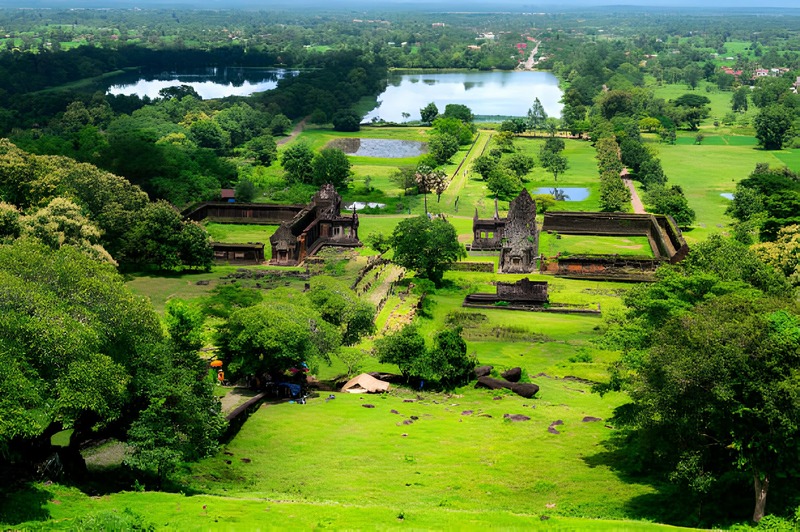
When to Visit Champasak?
The best time to visit Laos is between November and March, which are the months that offer dry weather and are best suited for travel. These months are warm even when compared to much of Laos' neighboring countries, with the height of warm weather, June and July, reaching levels that may be hard to endure, especially for those who are not accustomed to the intense heat.
Laos is also a landlocked country, so it has no direct connection with the sea. November to January, when water levels are high on the Mekong River, is the best time for travelers intending to travel along it.
The rainy season, also known as the green season, begins in late May and lasts through October. Most of the rains have returned. It is then that waterfalls start to revive, and landscapes metamorphose, draped in green.
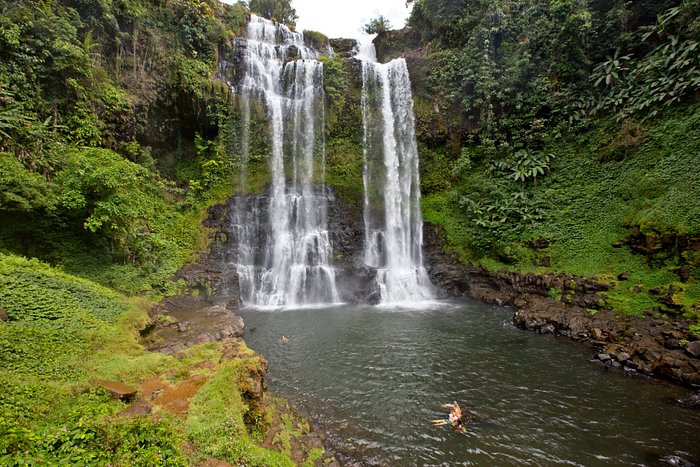
How to get there?
For independent travelers, there are a number of ways to get to their favorite destinations, hotels, and restaurants.
1. Air Transportation: Lao Airlines flies 14 times a week directly from Vientiane to Pakse International Airport. There is also a daily flight from Luang Prabang to Pakse. The airline serves Bangkok, Ho Chi Minh City, and Siem Reap.
2. Ground Transport:
- There are many daily departures of buses going from the South Bus Station in Vientiane, including VIP sleeper buses for night travel.
- International and provincial bus services to neighboring provinces within Thailand and Vietnam, such as Ubon Ratchathani, Da Nang, and Hue, as well as to Cambodia, including Phnom Penh and Siem Reap.
- Visas on arrival are available at border checkpoints.
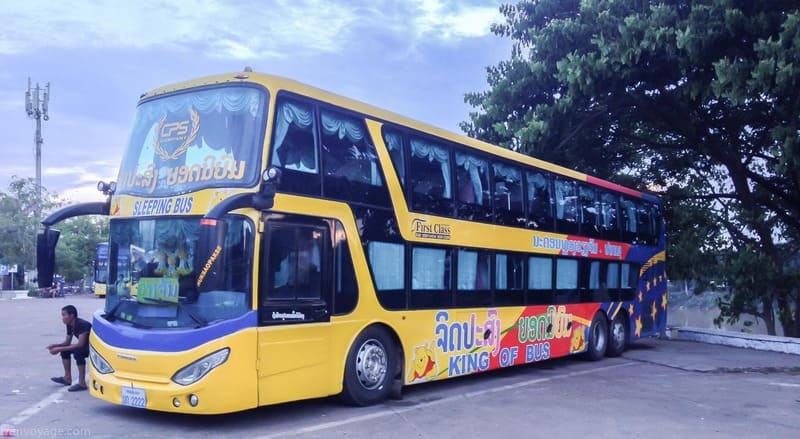
3. Local Transportation in Champasak Province:
- Public Buses: Pakse and central districts run public buses, but they generally have much more frequent schedules in the mornings.
- Songthaew: A large truck with benches inside the back has routes that run between major tourist destinations.
- Songthaews and tuk-tuks can be hired for one-way or day trips.
- To arrange transportation, go to the district bus station or ask your hotel or motel for help contacting local drivers.
>>> Read More: How to get to Laos?
What to Do and See in Champasak and Wat Phou?
-
Pre-Angkorian Archaeological Site of Wat Phou
At the heart of a scenery of picture-perfect hilly entities is the sacred Mount Phu Kao, where lies Wat Phou, a veritable architectural masterpiece of the ancient Khmer Kingdom. Historians state that most of the buildings in the complex were built between the 10th and 12th centuries, but there are also some remnants from the 5th century.
Literally translated as Temple of the Mountain, the area covers around 85 hectares. The way ahead is lined with sculptures, leading to two ruined palaces at the back of which appears a stairway going up. There lies a sanctuary that commands marvelous views over the whole area.
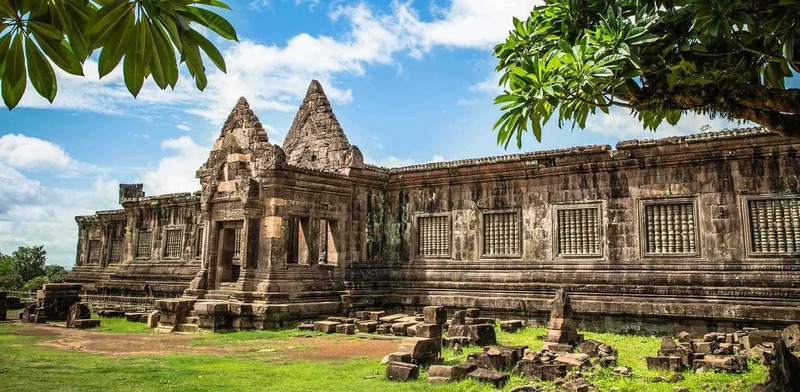
Every year, Makha Busa, a Buddhist festival, lasts for three days, beginning with the full moon of the third lunar month. The atmosphere is splendid, livelier than ever with torchlight processions, canoe racing...
-
Bolaven Plateau
The site spreads through three provinces, but chiefly Champasak. This area has gained prominence as the foremost coffee-producing region of Laos owing to its favorable climate and fertile land. During your visit, you may take walks on many plantations and meet some ethnic minorities: Alak, Tahoy, Ngai, or Katu, who are often dressed in their traditional attire and lead a largely traditional lifestyle.
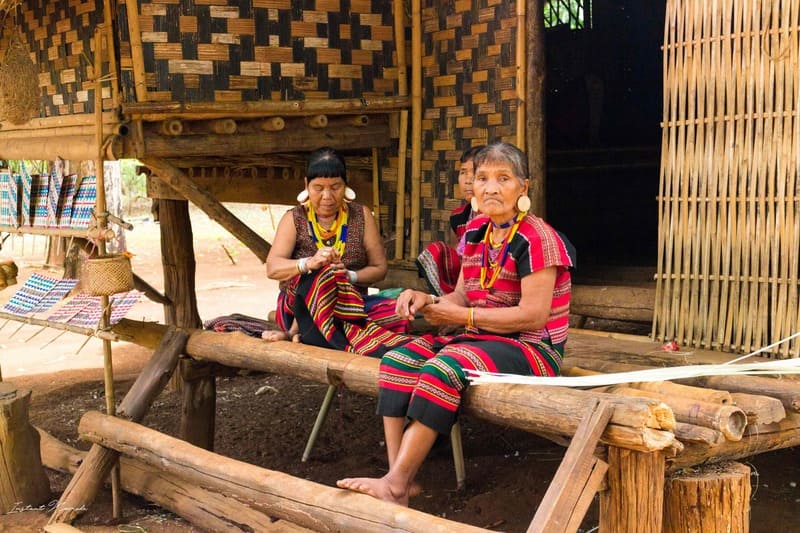
While walking through the Bolaven Plateau, don't miss out on marveling at some of the most breathtaking waterfalls in all of Laos, such as Tad Fan, possibly the highest in the land, or Tat Yuang, which tumbles in the heart of a lush forest.
-
4000 Islands and Irrawaddy Dolphin Region
The "4000 Islands" or "Si Phan Don" in Laotian is an archipelago made up of islets of various sizes and located in the middle of the Mekong River. In the rainy season, it can reach 14 km in width. This haven of peace attracts visitors from all over the world with its vast expanses of rice fields and lush vegetation. There are also impressive waterfalls, including Khone Phapeng, the largest waterfall in Southeast Asia. The atmosphere is relaxed thanks to the warmth of the local population, who live mainly from rice and fish farming. Lucky travelers can also see freshwater dolphins, which are unfortunately threatened with extinction.
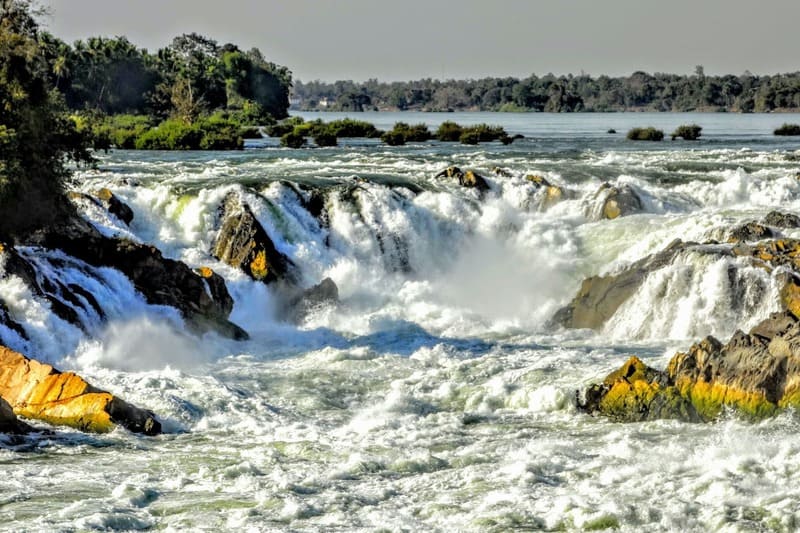
This relatively remote area offers a limited number of accommodations, mainly on three islands: Don Khong, Don Det, and Don Khone. At the end of November and the beginning of December, you have the opportunity to participate in the Bun Suang Heua, a nautical festival known for its canoe races on the Mekong River.
>>> Learn more about: Crossing the 4000 Islands
-
Pakse
The capital of Champasak and southern Laos doesn't have an especially attractive character. But it is the threshold to the important features of the region, such as the Bolaven Plateau, the 4000 Islands, and the Wat Phou temple. People with time can visit the largest marketplace in the nation, Talat Dao Heug, or visit Wat Luang, the largest and most beautiful temple in the area that harbors a religious school. There are also other attractions like the Champasak Museum and Don Kho Island located on the Mekong River. Not to mention the villages of Ban Saphai, which specializes in silk weaving, and Ban Don Kho, where Buddha statues are carved from stone.
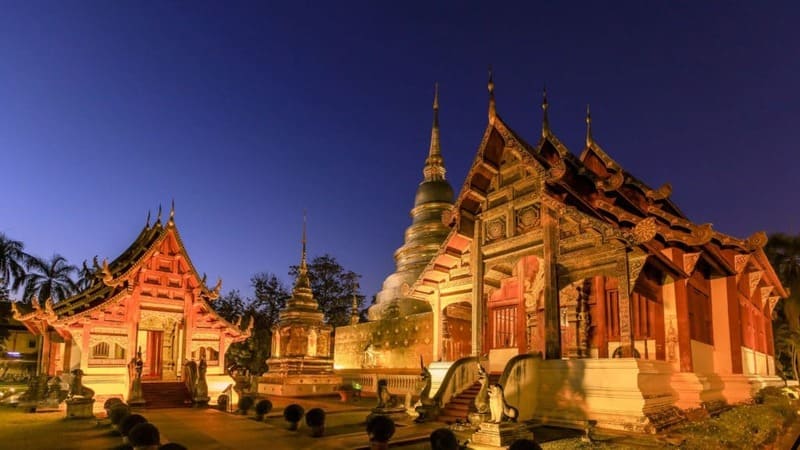
>>> Related: Visit Pakse Laos
Visit Champasak: Which Itinerary and How Many Days?
Usually, a full-day tour is enough time to see the magnificent Wat Phou temple in Champasak; however, to achieve a fuller experience of an ancient civilization that thrived prior to the Angkorian era, an extended tour is highly recommended. The Four Thousand Islands and Bolaven Plateau will give an entirely different perspective of this region. Thus, we have put together a four-day itinerary for how you can thoroughly explore this stunning destination. Recommended pathways for you to take:
Day 1: PAKSE - BOLOVENS
- Arrival in Pakse, and after that, transfer to the Bolaven Plateau.
- Visit Tad Fan.
- Then trek to the local villages, namely Ban Lak Sipchet and Ban Lak Samsip.
- Discover Tad Yeung, with a swimming opportunity in the pool at the bottom of the waterfall.
Day 2: BOLAVEN - WAT PHOU - DON KHONG
- Visit Tha Teng food market and explore the minority villages.
- Visit Wat Phou.
- Discover some examples of French Colonial architecture in Champasak.
- Explore Don Khong.
Day 3: DON KHONG - THE REGION OF 4000 ISLANDS
- Discover the Mekong and Siphandon region.
- Board your long-tail boat from Si Phan Don.
- Visit a local market.
- Admire nature at Liphi Waterfall.
- Explore the remains of the railway station and the architectural works of the French colonial era.
- Appreciate the architecture and learn about the area’s spiritual traditions at the village pagoda.
Day 4: 4000 ISLANDS - KHONE PHAPHENG - PAKSE
- Arrive at Ban Nakasang fishing village and visit Khone Phapheng.
- Return to Pakse with a visit to Ban Khoh en route.
- Climb to the summit of Wat Phou Salao.
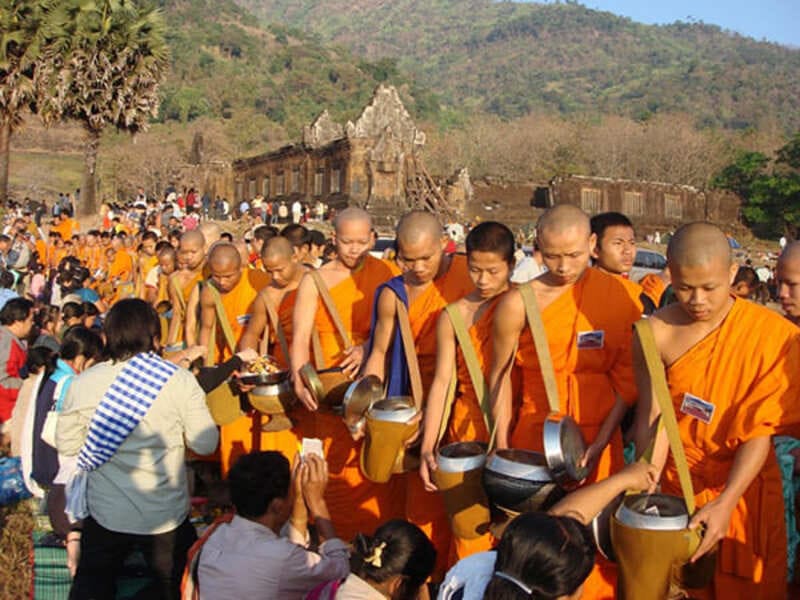
Tips for a Complete Trip
- Transport: Tuktuks or taxis can also be rented, although they may not be readily available. The sites charge no entrance fees, but a parking fee applies to each waterfall, ranging between $1 and $2.
- Money: Remember, though, that there are no ATMs around or in the neighborhoods at attractions, so make sure to carry sufficient money.
- Dining: The extent of areas around waterfalls and the villages is very limited when it comes to options. You would best pack some snacks and bottled water. There are no public washrooms on-site, either.
- Other Paraphernalia: Umbrella, or cap for sun protection; raincoat; good walking shoes for the steep, slippery terrain likely to be encountered.
Our last words
Historically, Champasak reveals its magnificent heritage from the ancient land. Traveling along this heritage through the Mekong has much potential for immersive adventure, history, nature, and authenticity. Don't hesitate to reach out to us today for a tailor-made trip if you want to simplify your arrangements. Our program will be built according to your wishes!
>>> Read More:
- Lao New Year Guide in 2025: Sok Di Pi Mai!
- Everything you need to know about Laos train - Price & Tickets 2025
- How Much Does a Trip to Laos Cost? Detailed Budget to Plan in 2025












